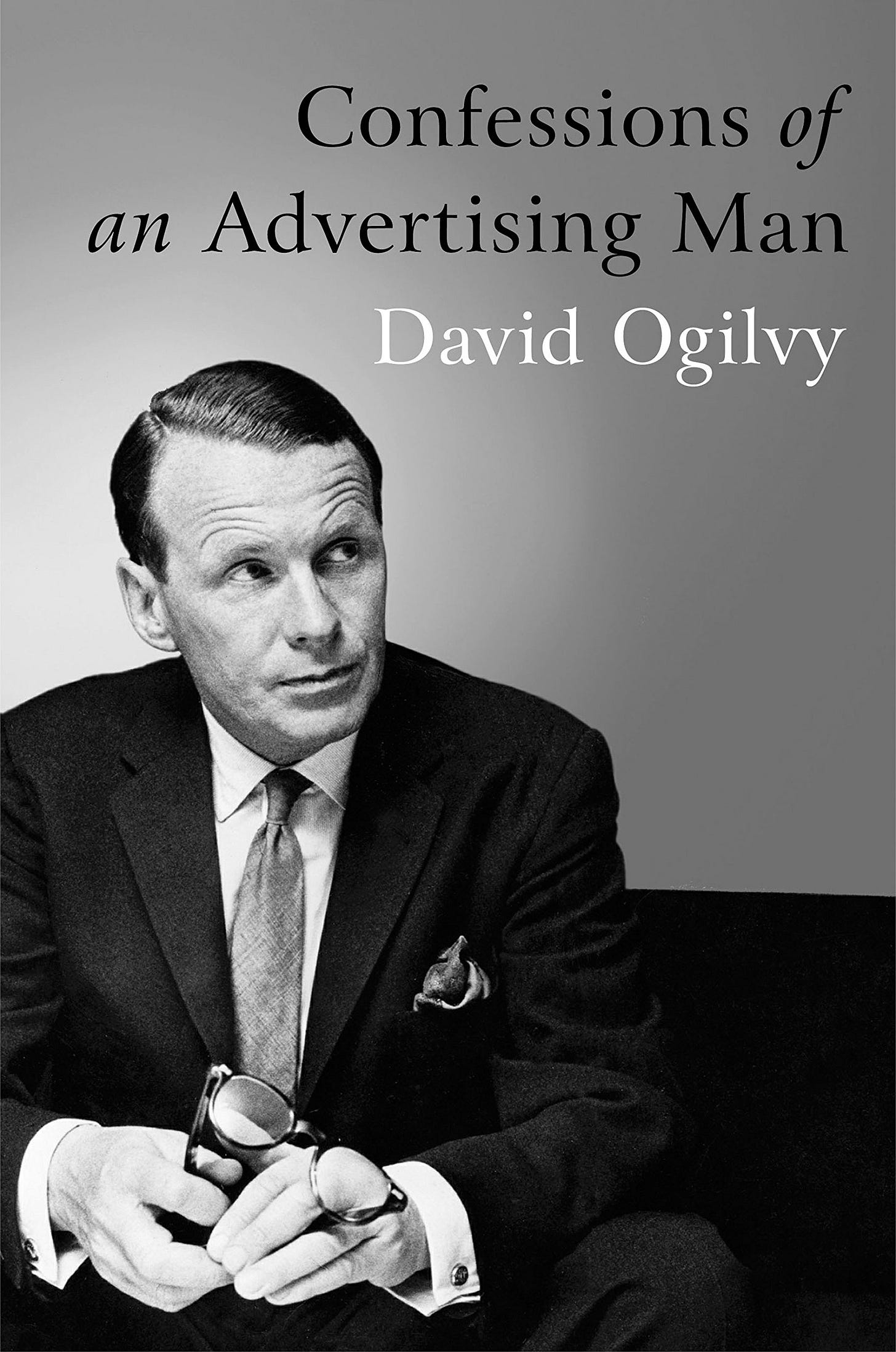📚Book Club - Confessions Of An Advertising Man Part 3
Or... why finding new clients is the worst.
It’s Book Club - a weekly post and thread about a book that matters. Let’s do this!
On tap: Week 3 of David Ogilvy’s iconic Confessions of an Advertising Man.
If you’re starting a business, there are a lot of great things about running a services-based operation like an advertising agency. Unlike, say, a restaurant or a retail store, you’re not dealing in physical inventory. Your startup costs are modest: Launching an advertising agency doesn’t require renting an office, getting professional certifications, hiring employees or other add-ons. As long as you’re moderately competent, have a computer and a smartphone, and have the ability to work long hours for little pay, the odds your business will get off the ground are pretty decent.
But you know what sucks about actually running an advertising agency? And remains sucky whether you’re the most modest freelancer or the president of a fancy Madison Avenue agency with hundreds of employees on bankroll?
Finding clients.
A good chunk of Ogilvy’s book is given over to the fine art of finding clients, which hasn’t changed all that much since it was written in the 1960s. Some things have gotten easier (Cheap airfare makes pitching out of town clients much easier in normal times! Normalization of Zoom and other video meetings! Twitter/Instagram/TikTok reducing credentialism somewhat and creating an alternative talent pipeline!) but finding clients remains a royal pain.
And a bit of an explainer for folks not working in the advertising industry: Ad agencies live and die on their clients. One single marquee client can keep an agency fat as a blood tick for years; it’s not unheard of for ad agencies to shutter regional offices and lay off all the employees after losing their account in that city. The economies of advertising mean that one-off projects aren’t really profitable and that sustainable business models instead depend on multi-year retainers.
It’s also universally frustrating for the smallest freelancers and the largest agencies. As creative businesses scale from individual freelancers into proper agencies, the basics remain the same—business development, account management, administration and then the actual creative work. A graphic designer working on their own is going to be stressed they’re spending 12 hours of their 60 hour weeks pitching new clients instead of working on paying projects; an agency with 24 employees will be stressed because their best copywriter and designer are splitting their time between a long-odds high-reward pitch and paying work.
So it goes.
Anyway, a few takeaways:
CHOOSE YOUR TARGETS: Ogilvy claims that the big turning point for his agency’s success was when they made the decision to switch from taking every account they could get to focusing on a “list of five blue-chip targets” (again, 1960’s). Some of this is good old-fashioned boasting, but also: Ogilvy’s right. Work too much on a little bit of everything, and you risk becoming a generalist—and the big bucks go to specialists who can do a few things very well… not the generalists who can do a good job of anything. Once your business has enough client flow that you don’t have to worry about your next quarter, give thought about what you want your company to be the best at… and who your dream clients are.
DO FREEBIES: As the book puts it in impeccable sixties-speak, “An agency’s first clients are the hardest to get, because it has no credentials, no record of success, no reputation. At this stage it often pays to speculate by conducting a pilot survey on some aspect of your prospective client’s business. There are few manufacturers whose curiosity is not piqued when you offer to show them the results of such a survey.”
Surveys still work in 2021. So do social media audits, market analyses and a host of other client freebies. Don’t give them the inner details initially—just some surface findings—but use your value add as a way to get your foot into the door.
KNOW YOUR CUSTOMER: Here we have another of it’s time gem that’s still relevant in our pandemic year of the lord 2021: “In my youth I sold kitchen stoves at the Ideal Homes Exhibition in London. Each sale required a personalised pitch which took me forty minutes to administer. The problem was to pick out from the milling crowd those rare individuals who were rich enough to buy my stove, which cost $400. I learned to smell them; they smoked Turkish cigarettes, a mark of aristocracy, like an Old Etonian tie.”
Translating to 2021: Can you identify your target audience in 30 seconds? Riffing off the top of my head, I know I’m going to have an easy time making a sale to a middle-to-upper-level supervisor either at an agency or in-house who reads It’s Nice That, has a coffee table book of street art at home, subscribes to Wired magazine, has a secret Instagram account for meme shitposting and listened to a lot of LCD Soundsystem or MF Doom in the past few years. How about you?
Next week: Keeping clients.
Love and coffee,
Neal
About This Newsletter: Neal Ungerleider is a strategic communications consultant working with individuals, agencies and brands. He writes this weekly newsletter about the media communications industrial complex and hopes that you found it of use. Check out his bio, his portfolio, and current projects and interests .
Connect on Twitter or LinkedIn and learn more about at nealungerleider.com. To reach Neal, reply to this email or drop a line in the comments.





